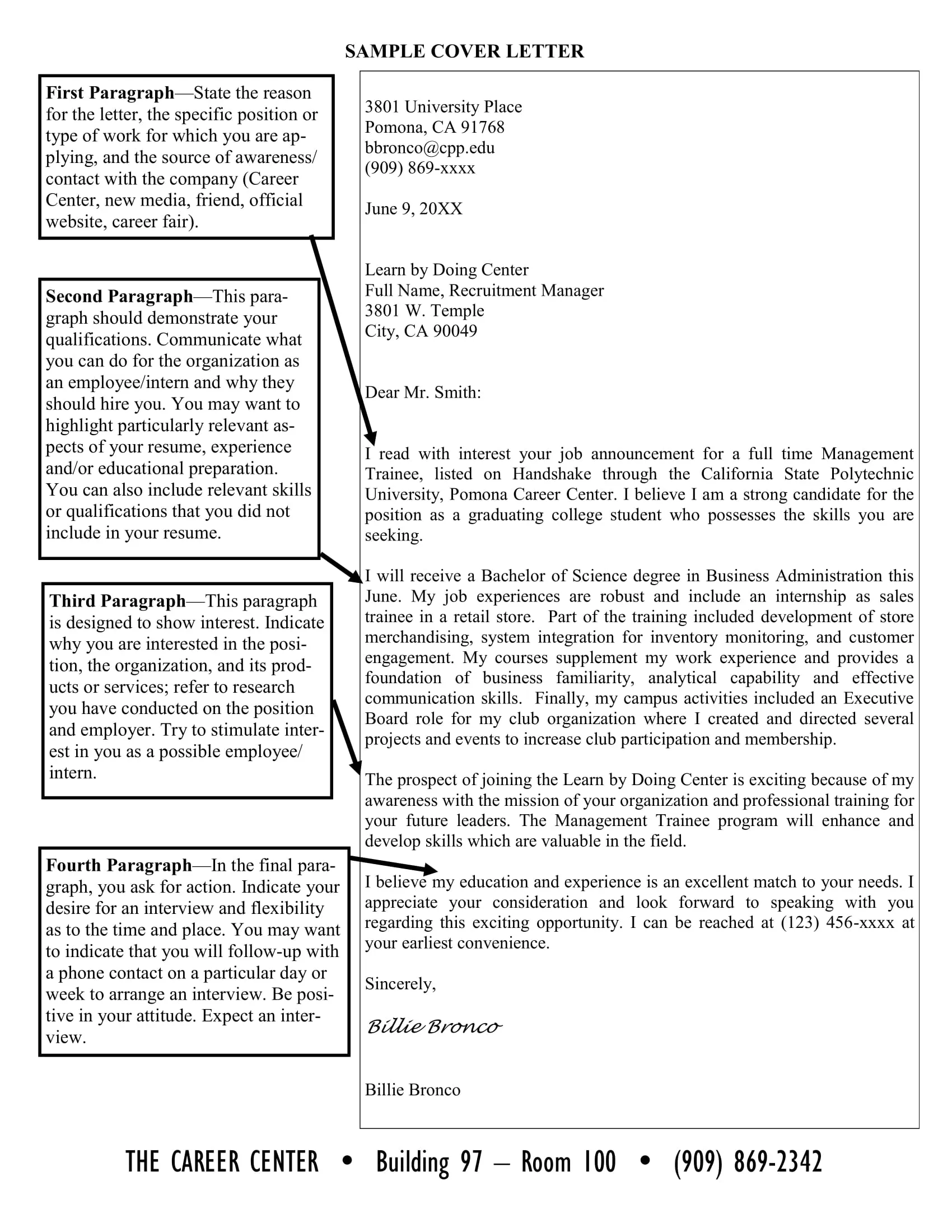Crafting the Perfect Cover Letter
In today’s competitive job market, a well-crafted cover letter is more crucial than ever. It’s your first introduction to a potential employer, and a poorly written one can immediately disqualify you. A great cover letter is not just a rehash of your resume, but a persuasive narrative that highlights your unique qualifications and showcases your enthusiasm for the specific role and company. This article delves into the best cover letter tips to help you make a lasting impression and increase your chances of landing an interview. We’ll explore everything from structure and formatting to content and tone, ensuring you present yourself in the most professional and compelling light possible. By following these guidelines, you’ll be well on your way to creating a cover letter that stands out from the crowd.
Highlighting Your Strengths
Your cover letter is your opportunity to shine a spotlight on your key strengths. Don’t just list skills; provide concrete examples of how you’ve utilized them to achieve results. Quantify your accomplishments whenever possible. For instance, instead of stating “Managed social media accounts,” say “Increased social media engagement by 30% within six months.” This provides tangible evidence of your abilities and makes your claims more credible. Tailor the strengths you highlight to match the specific requirements of the job description. Research the company to understand their values and priorities, and then emphasize the strengths that align with their needs. This targeted approach demonstrates that you’ve done your homework and are genuinely interested in the opportunity.
Showcasing Relevant Skills
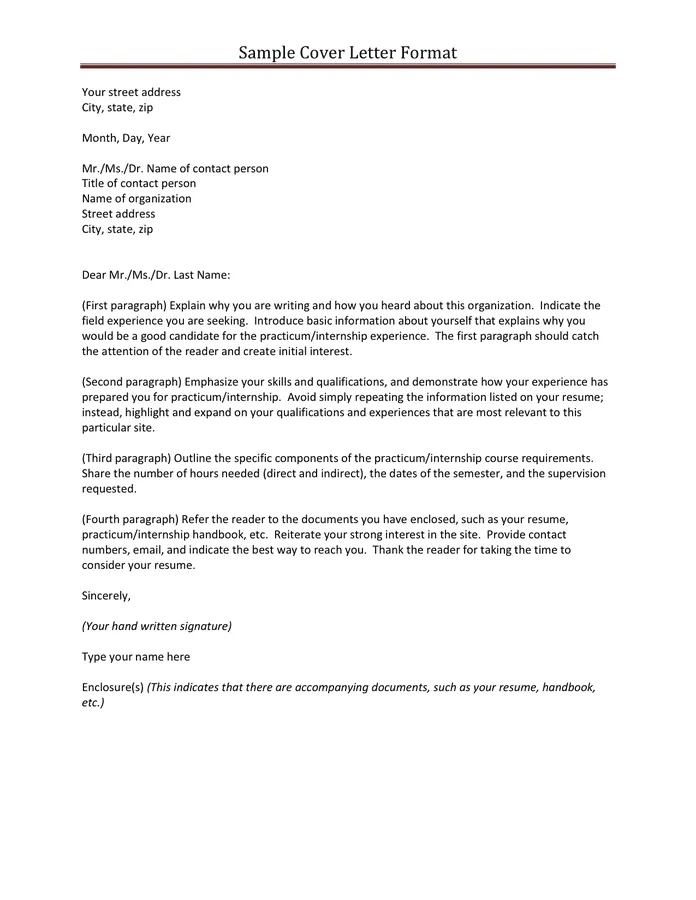
Identify the skills that are most relevant to the job you’re applying for and make sure they are prominently featured in your cover letter. This may involve both hard skills (technical abilities) and soft skills (interpersonal and professional attributes). Use action verbs to describe your skills and accomplishments, such as “managed,” “developed,” “implemented,” and “achieved.” Provide specific examples to illustrate how you’ve used these skills in the past. For example, if the job requires strong communication skills, you might write, “Effectively communicated project updates to cross-functional teams, ensuring alignment and on-time project delivery.” This approach provides concrete evidence of your capabilities rather than just making general claims.
Tailoring Your Cover Letter
One of the biggest mistakes job seekers make is sending out generic cover letters. Always customize your cover letter for each job you apply for. This demonstrates your genuine interest in the specific role and company, and it increases your chances of getting noticed. Review the job description carefully and identify the key requirements and qualifications. Then, tailor your cover letter to address those specific points. Highlight how your skills and experience align with the employer’s needs. Research the company to understand its values, mission, and culture, and then subtly integrate this information into your letter to show that you understand and appreciate their unique qualities. A personalized cover letter shows that you’ve taken the time to understand the opportunity and are truly invested in joining their team.
Researching the Company
Before you even begin to write your cover letter, research the company thoroughly. Visit their website, read their “About Us” page, and explore their social media profiles. Understand their products or services, their mission and values, and their recent news or initiatives. This information will help you tailor your cover letter to the company’s specific needs and demonstrate your genuine interest. Look for keywords and phrases used in the company’s marketing materials or mission statement. Incorporate these into your cover letter to show that you understand their brand and are a good fit for their culture. Showing that you’ve taken the time to research the company demonstrates initiative and a strong desire to join their team, making your application more compelling.
Understanding the Job Description
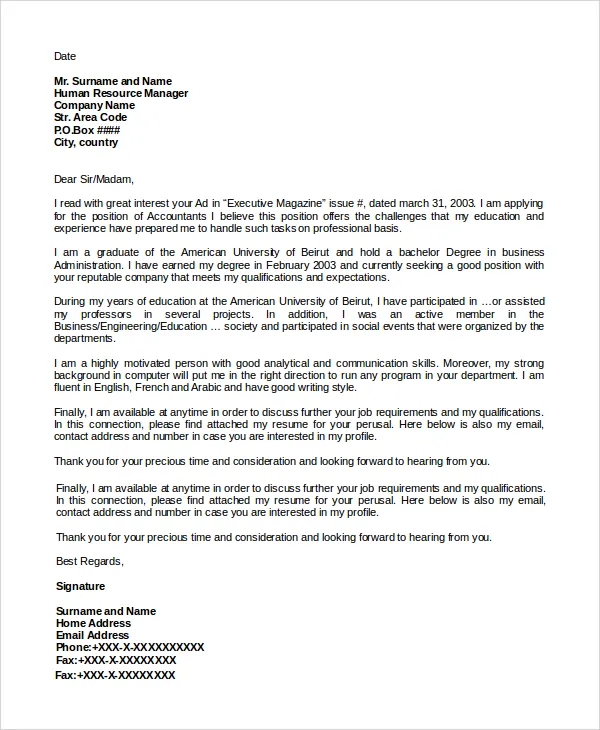
The job description is your roadmap to writing a successful cover letter. Carefully read and analyze the job description to identify the key requirements, qualifications, and responsibilities. Highlight the skills and experiences that the employer is seeking. Use the job description as a guide to structure your letter, addressing each of the key requirements and explaining how your qualifications align with their needs. Pay attention to the language used in the job description and use similar keywords and phrases in your cover letter. This helps the hiring manager quickly see that you meet their criteria. Make sure you address all the essential points in the job description to make your cover letter comprehensive and relevant.
Cover Letter Structure
A well-structured cover letter is easy to read and effectively conveys your message. The standard format includes a header with your contact information, a greeting, an introduction, body paragraphs, a closing, and a call to action. Keep it concise and focused. Aim for a single page, unless specifically requested otherwise. Organize your content logically, using clear and concise language. Each paragraph should have a specific purpose and contribute to the overall narrative. Use headings and bullet points (where appropriate) to break up large blocks of text and improve readability. A clear structure demonstrates professionalism and helps the hiring manager quickly grasp your key qualifications and interest in the role.
Header and Contact Information
Your header should include your name, address, phone number, and email address. Ensure this information is accurate and up-to-date. Use a professional email address. Avoid using nicknames or informal email addresses. Consider including a link to your LinkedIn profile or online portfolio if applicable. This provides the hiring manager with additional information about your professional background. The header should be clean and easy to read, typically aligned to the left or right of the page. Make sure your contact information stands out so it is easy for the hiring manager to reach you. Double-check all details before submitting your cover letter to avoid any errors.
Greeting and Introduction
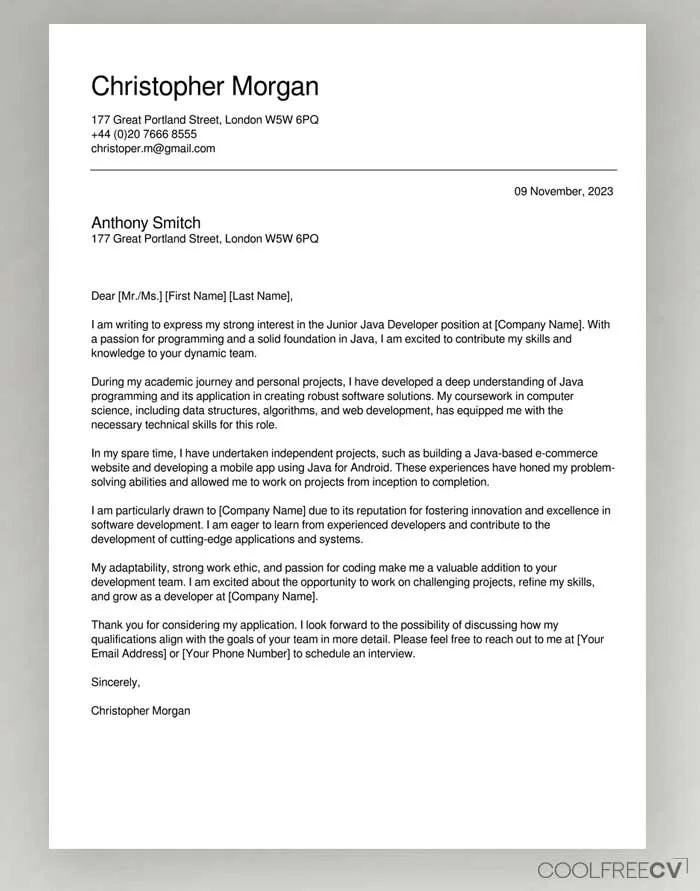
Address your cover letter to a specific person whenever possible. Research the hiring manager’s name or the name of the person in charge of hiring for the position. A personalized greeting demonstrates that you’ve taken the time to research the company and shows your attention to detail. If you can’t find a specific name, use a professional greeting like “Dear Hiring Manager.” Your introduction should immediately grab the reader’s attention. State the position you are applying for and briefly mention how you learned about the opportunity. Briefly highlight your most relevant skills or experiences, and express your enthusiasm for the role and the company. The introduction sets the tone for the rest of your cover letter and encourages the reader to continue reading.
Body Paragraphs
The body paragraphs are the core of your cover letter, where you make your case for why you’re the best candidate. Use these paragraphs to elaborate on your skills, experiences, and accomplishments. Provide specific examples to support your claims. Quantify your achievements whenever possible, using numbers and data to demonstrate your impact. Tailor the content to the specific requirements of the job description. Align your skills and experiences with the employer’s needs. Consider structuring your body paragraphs around the key requirements or qualifications listed in the job description. This helps the hiring manager quickly see the connection between your skills and the job requirements, making your cover letter more effective.
Closing and Call to Action
Your closing paragraph should reiterate your interest in the position and thank the reader for their time and consideration. Express your enthusiasm for the opportunity and reiterate your key qualifications. End with a clear call to action, such as requesting an interview or expressing your eagerness to discuss your qualifications further. Include your contact information again for easy access. Be professional and confident in your closing. Your closing paragraph should leave a positive and lasting impression on the hiring manager. A strong call to action encourages the reader to take the next step in the hiring process.
Formatting and Design
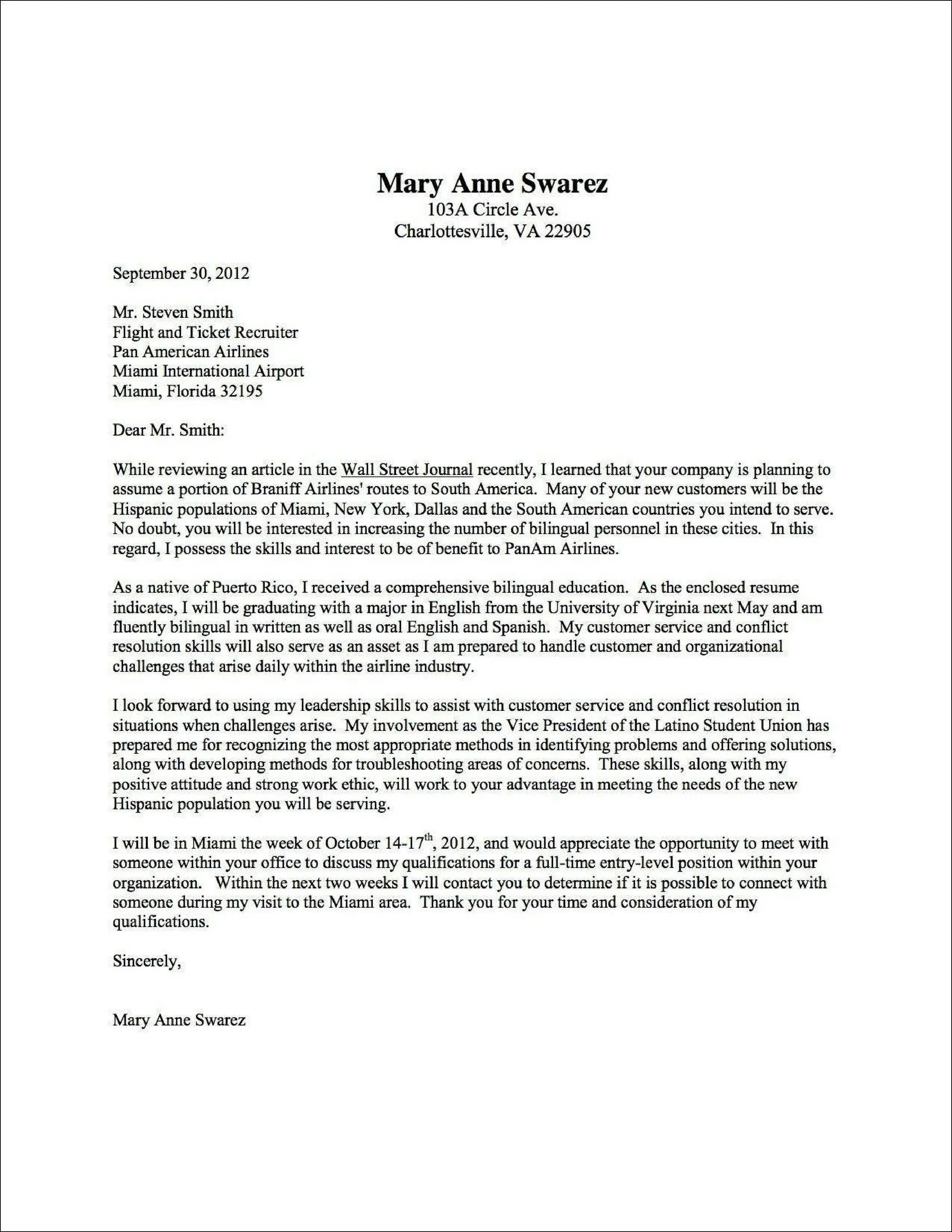
The format and design of your cover letter contribute significantly to its overall impression. A clean and professional layout makes your letter easy to read and demonstrates attention to detail. Use a standard font like Times New Roman, Arial, or Calibri in a size between 11 and 12 points. Maintain consistent formatting throughout the document, including spacing, margins, and alignment. Use bullet points and headings to break up large blocks of text and improve readability. Avoid excessive use of bolding, italics, and underlining. A well-formatted cover letter shows that you care about the details and are committed to presenting yourself in the best possible light.
Font Selection
Choose a professional and easy-to-read font for your cover letter. Stick to classic fonts like Times New Roman, Arial, Calibri, or Georgia. Avoid using overly stylized or unconventional fonts, as they can be difficult to read and detract from your message. The font size should be between 11 and 12 points to ensure readability. Ensure the font you choose is widely available and renders correctly on different devices. A professional font conveys professionalism and attention to detail, while a readable font ensures the hiring manager can easily read and understand your application.
Layout and Readability
A clean and organized layout is essential for readability. Use consistent margins (typically 1 inch on all sides) and spacing between paragraphs. Use headings and subheadings to break up your content and make it easier to scan. The overall layout should be visually appealing and uncluttered. Avoid using long paragraphs and excessive text. Use bullet points and numbered lists to highlight key skills and accomplishments. A well-structured layout helps the hiring manager quickly grasp the most important information and demonstrates your organizational skills.
Cover Letter Dos and Don’ts
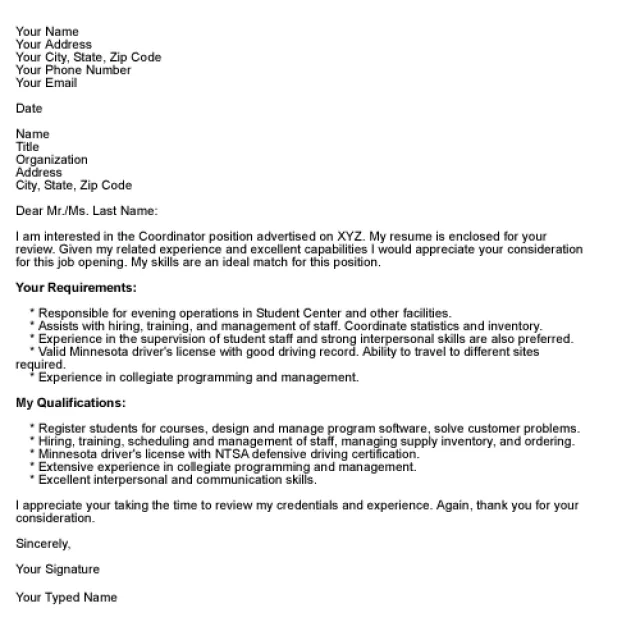
Follow these do’s and don’ts to create an effective cover letter:
Do tailor your cover letter to each job, highlight your strengths, use action verbs, and proofread carefully. Don’t use generic templates, be overly verbose, make grammatical errors, or include irrelevant information. Do focus on the employer’s needs and the value you bring. Don’t simply restate your resume; elaborate on your accomplishments. Following these guidelines will help you avoid common pitfalls and create a cover letter that showcases your best qualities and increases your chances of success.
Proofreading and Editing
Proofread your cover letter carefully before submitting it. Errors in grammar, spelling, and punctuation can create a negative impression and undermine your credibility. Read your cover letter aloud to catch any awkward phrasing or mistakes. Ask a friend or family member to review it as well. They can provide a fresh perspective and help you identify errors that you may have missed. Ensure the tone of your cover letter is professional and appropriate for the job and company. Make sure your content is concise, well-organized, and easy to understand. A polished cover letter demonstrates attention to detail and professionalism, making a positive impact on the hiring manager.
